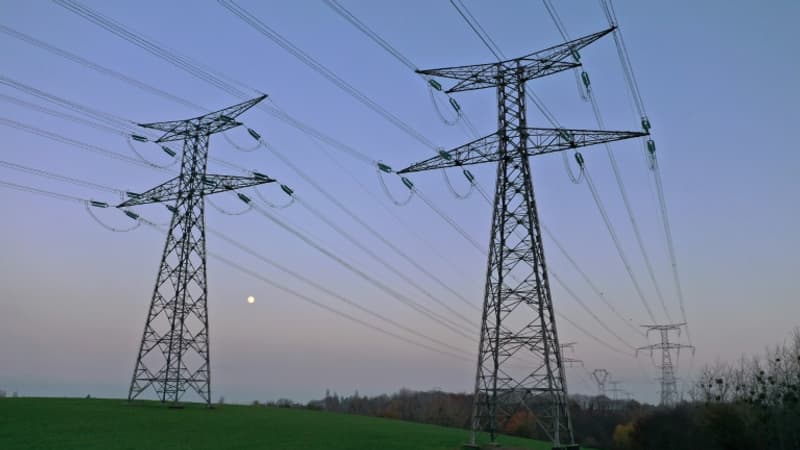With winter 2022-2023 over, RTE is learning lessons from this particular period for the European electricity market. The European system, which is a mixture of markets and interconnections, has been facing an unprecedented situation of tension for a year now that has manifested itself in three areas: gas availability crisis, nuclear production crisis and hydraulic drought. The operator of the electricity transmission network proposes a system that guaranteed security of supply, since exchanges between countries were not subject to any restrictions and electricity flows were immediately redirected to the countries that most needed them.
However, the manager has adopted a second reading in recent months, which has resulted in a rebound in prices, especially in France in the electricity futures markets, with important economic consequences that are acknowledged to be mitigated by the devices of existing protection (ARENH, Regulated Sales Tariff) or defined for these purposes as a tariff shield or even as a buffer.
Complement short-term markets with long-term mechanisms
While therefore welcoming the effectiveness of the European system in ensuring security of supply, RTE points a finger at the lack of long-term economic signals and the lack of consistency on two aspects of the price dependency of electricity for the fossil fuel consumer. This dependence is not coherent on the one hand with the climate policy that requires rapid electrification to get out of these fossil energies and on the other hand with the policy that seeks to reindustrialize while other parts of the world benefit from low-cost energy and protectionist measures. .
The manager thus believes that the European electricity market should be based on two pillars. First of all, we must preserve the proper functioning of the markets in the short term, which has proven to be robust in crisis situations and allows efficient optimization of resources. These short-term markets must then be complemented by long-term mechanisms so that the prices actually paid by the end consumer reflect the economic fundamentals of French electricity production and the choice of a largely carbon-free electricity mix.
Thus, RTE recalls that for a quarter of a century national electricity systems have been liberalized and integrated into the single energy market, whose objectives are to guarantee security of supply at an affordable price for all consumers, respecting climate objectives and promoting healthy competition in the European market.
A lagging effect between market prices and their impact on consumers
To analyze the evolution of electricity prices during the year 2022, the manager distinguishes between the evolution of spot prices and that of forward prices. The first reflected the fundamentals of the supply-demand balance of the European system by reflecting changes in fuel prices, the availability of means of production and the level of demand. The low nuclear and hydro production caused them to reach record levels in France during the summer (612 euros per MWh on average during the week of August 22) before returning to lower levels at the beginning of the school year, remaining high before finally falling significantly between mid-December and mid-January.
Regarding the increase in future electricity prices, it actually started even before the invasion of Ukraine and peaked in the summer of 2022. Since late 2021, it was a consequence of the post-Covid global economic recovery combined with a low level of filling of gas reserves in certain European countries. Then the geopolitical crisis between Europe and Russia arose and then fears about the security of supply in France arose among market players and were largely fueled by the perceptible effects of the low availability of French nuclear power.
Contrary to the spot prices, the futures prices registered in France in the summer of 2022 for delivery the following winter deviated from the fundamentals and were higher than those of neighboring countries such as Germany, which is explained by the existence of a premium for risk for France. “The easing of electricity prices is a positive outlook for consumers who remain exposed to market prices, in particular for companies, adds RTE. This drop does not immediately translate into a lower electricity bill for all consumers, especially to the extent that supply contracts are based on futures. markets, several months in advance”.
The French objectives included in the European reform proposal
At a European level, the reform of the European electricity market that is currently being discussed is structural in nature and aims to harmonize short-term prices and system costs. The legislative proposal published almost a month ago by the European Commission after a month-long public consultation follows the emergency measures implemented in 2022 that are applicable from December 1 to June 30 for now. For Member States, it is about limiting the income of electricity producers to 180 euros per MWh. Spain and Portugal are exceptions since these two countries limit the price of gas for the production of electricity.
According to RTE, this proposal from the European executive resumes the objectives defended by the French authorities. Among these main objectives are the preservation of the functioning of the market in the short term with an optimal allocation of means of production and flows to the European network, the promotion of investment in production players with low carbon emissions and the possibility that French consumers benefit from competitiveness. advantage of an already largely carbon-free mix with low operating costs. Sur ce dernier point, le gestionnaire évoque une “necessité particulièrement marquée en France où 93% de la production est bas carbone (situation nominale) alors que, 90% du temps, les prix de marchés dépendent directly or indirectement d’une centrale utilisant une fossil energy”.
However, the timetable for the adoption of the reform is debated while the council of energy ministers on June 19 is targeted with a view to an agreement. For its part, France wishes that the text be adopted before the end of the year and that this calendar be articulated with the reform of the ARENH system (Regulated Access to Historical Nuclear Electricity) that will be completed in 2025.
Source: BFM TV


